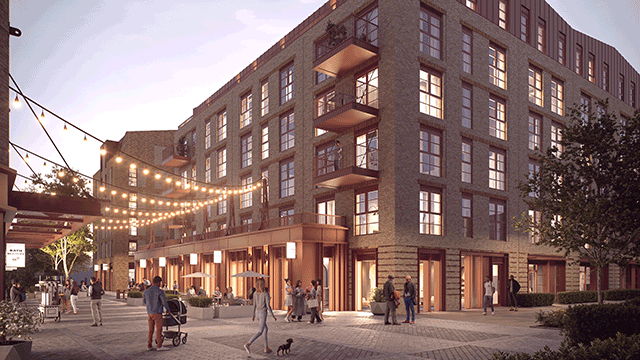The London office market has begun 2018 steadily and unspectacularly.
Investment totals have dropped by 19% on the same period in 2017, with the industry citing a lack of available stock as the cause.
Occupational activity, however, showed a robust uplift from last year’s opening quarter, indicating potential for a healthy year underpinned by demand for new-build space.
Rental tone is stabilising across the market after quarterly decreases since Q3 2016, while availability rates moved inwards for the second successive quarter.
Construction remains healthy – with 1.5m sq ft of starts in Q1, and a pipeline which shows upwards of 7m sq ft to complete in both 2018 and 2019.
| Investment | Take-up |
| Construction | Take-up by sector |
| Availability, supply and rents | Agent league table |
| Submarket league tables | Investment league table |
INVESTMENT
A very quiet opening quarter
London office investment totalled £2.7bn in the first three months of the year – down by 19% on Q1 2017.
Headline transactions included Riverbank House, EC4, which was marketed with a guide price of £400m; and Regent Quarter, N1, sold to Nan Fung for £303m.
The first three months of the year are usually the quietest for investment and this year was the quietest opening quarter for investment since 2014 – when just £1.5bn of stock transacted.
That year ended with more than £16bn being spent in London but 2018 is unlikely to reach that figure given the different stage of the cycle the sector is in.
Assets are already being prepped for removal from the market and there is a distinct lack of appropriately-priced stock available.
Investment in 2017 was characterised by strong overseas demand and, while there remains global interest in the capital, it has diluted slightly in recent months due partially to the recovery of the pound.
James Beckham, head of London investment at CBRE, says: “The opportunistic private Asia Pac investors were certainly motivated by a strong discount to sterling post-referendum, and it’s bounced back to pre-referendum level.
“That advantage has now been eroded, and that headwind may be partly responsible for a slight slowdown in volumes for Q1.”
He adds that investor concerns over a mass-exodus of businesses into Europe post-Brexit have been assuaged, which has helped maintain the weight of international capital looking at London.
“Investors are willing to take long-term views on the position of London and are coming to terms with the fact that a lot of the headlines about the volume of potential departures from the London workforce into European cities has been radically reduced,” he says.
TAKE-UP
No cause for alarm
The occupational side of London offices has seen a steady start to 2018, with 2.65m sq ft let in the first three months of the year – an increase of 5% on the same time period last year, albeit falling by 31% on the fourth quarter of 2017, and down by 9% on the 10-year quarterly average.
Leasing statistics mirror the investment pattern for London offices insofar as Q1 is usually the quietest for activity. We would expect a drop-off from Q4, and for it to reflect shallower take-up levels than long-term averages.
Historically, the first quarter of the year only accounts for 22% of full-year take-up while Q4 is usually responsible for just over 30%, with deals often ‘encouraged’ over the line in December, so those downward movements on Q4 and the long-term average should not give too much cause for alarm.
High volumes
The first quarter’s take-up figure has come partially as a result of the most active start to the year we have ever recorded, with 383 individual transactions completed across the capital – 27 more deals than last year’s opening quarter, which itself was a record-breaker.
With 1,960 individual availabilities on the market at the turn of the year – an increase of 41% on availability volumes at the start of 2017 – such a large amount of agency graft, coupled with increased occupier demand for smaller spaces, was always going to be required to power office take-up to a strong level.
Looking towards the rest of 2018, there can be some cause for optimism on the lettings front, with under-offer space hitting almost 2.2m sq ft – 29% above the five-year average and only the second time in the last 10 years that the figure at the end of March has been above 2m sq ft.
This is due largely to a resurgence in under-offer space in the City fringe, Docklands and Midtown submarkets – all of which saw figures rise from beneath 100,000 sq ft at the end of 2017 to more than 300,000 sq ft of space under offer at the end of March this year.
Dan Burn, head of city agency at JLL, is optimistic about take-up figures in the immediate term, but offers a note of caution.
“While we have a good flow of transactions and demand that is actively seeking product, I think towards the end of the year, if we haven’t got further advanced in the trade negotiations around Brexit, there might just be a bit more cautiousness in the marketplace,” he says.
Boosted by construction
In the previous London Office Market Analysis, we said that healthy construction activity should help take-up levels in 2018, following on from a year in which almost one-fifth of take-up came in spaces which were under construction, and almost a quarter in new-build or refurbished spaces.
As expected, that has continued this year, with 28% of all take-up coming in space currently under-construction – possibly as a result of occupiers looking to get ahead of the competition in securing spaces earlier than they would have done historically.
Burn says: “We are now seeing occupiers of the 20,000-50,000 sq ft range who traditionally didn’t come out to play in terms of being active in the market probably much before 12 months before they needed to.
“Now what you’re seeing is those size occupiers starting to look at product that’s not ready for another 18-24 months.”
The City core is the hive of London office construction at present – commanding nearly 35% of the space currently under development.
This has helped in making it the strongest performing submarket in Q1 with more than 1m sq ft of deals done – 43.5% of which was in under-construction units.
But it is not just the freshness of space which is helping the City’s appeal, it is also down to pricing, says Chris Vydra, head of city leasing at CBRE.
“City rents had a few years ago increased at a slower rate than the West End, and therefore business rates had also increased at a slower rate,” says Vydra.
“Therefore, on a total cost basis, you’ll get a much better quality building for a lower rent in the City.”
He adds: “There is a shift of tech occupiers believing that the City is more attractive as a place to work and to retain and recruit talent than ever before and, therefore, they’re very happy to make that shift from the west to the east.”
Submarket volatility
The only other submarket aside from the City core to see a rise on Q4 was Docklands, which had an incredibly subdued 2017 but has already seen 232,000 sq ft taken by occupiers this year – 90% of the Docklands’ full total take-up last year, underlining its characteristic volatility.
On the other side, the City fringe had its quietest opening three months since 2012, with just 218,474 sq ft transacted – down by 49% on the same period in 2017.
In sharp contrast to the City core, the fringe market is experiencing something of a stock issue.
Shaun Simons, co-head of city fringe at Colliers International, says: “The levels are lower because there are so few buildings being developed round here. But on the ground, what we’re seeing is that if you’ve got a good product it’s letting reasonably quickly.
“Take-up isn’t down because people aren’t taking buildings – it’s down because there’s such low supply. And that is a problem for the City fringe,” he says.
“That’s going to get a lot worse before it gets better.”
Take-up by sector
Tech was king once again in Q1 – with the TMT sector accounting for 22.7% of overall take-up, beating financial (18%) and professional (15.6%) into second and third place respectively despite the two latter sectors accounting for the largest two individual transactions of the quarter.
Sumitomo Mitsui Bank took 161,000 sq ft at 100 Liverpool Street, EC2, while law firm Sidley Austin signed for just over 100,000 sq ft at the Can of Ham, EC3.
Mimecast was the largest new tech occupier in Q1, taking 78,600 sq ft at 1 Finsbury Avenue, EC2.
Following the serviced office sector’s exponential rise up the charts in recent years, it was something of a surprise to see it command only 5.8% of overall take-up, coming sixth below the property sector (7.9%) into which it used to be subsumed.
Availability and supply
On the supply side, availability rates tightened in nearly every area of central London across Q1, with the southern fringe the only area to see an outward movement to 4.3%, which still makes it the most constrained location in the capital.
For the whole of London, the availability rate has moved to 7% from 7.4%, meaning a second consecutive quarter in which supply has tightened after almost two years of continued outward movement, which began in Q1 2016 once the increase in speculative development activity began to have a perceptible impact on the statistics.
That development activity is coming to the fore and having a positive impact on take-up, with under-construction space underpinning the robust start to the year.
EG’s forecasts indicate that upwards of 7m sq ft of new build space will complete in both 2018 and 2019, with 1.3m sq ft already completed this year.
Significant starts on new-build projects so far this year include 80 Fenchurch Street, EC3, and Ilona Rose House, WC2 – which between them contributed 404,000 sq ft to the development pipeline.
Rents
Rents across London offices rose by 0.6% on Q4 2017 – the first increase since before the EU referendum.
Since 2013, EG has canvassed industry-wide views on rental tone for 11 villages across London as part of the market analysis, aggregating those figures to indicate rental movement.
Eight of the 11 areas showed an increase on Q4 2017, with only Mayfair and Victoria reflecting a downward movement, while the City core stayed flat.
The largest quarterly increase came in Paddington, with rental tone rising by 3.1% against Q4 – thanks in part to new headline rents set at 4 Kingdom Street, W2, last year.
Looking annually, rents have fallen by 0.8% on what they were in Q1 2017 following a year of gradual corrections, particularly in prime West End areas.
AGENT LEAGUE TABLES
Overall leasing
After its second-place finish last time, CBRE has come out on top – disposing of 857,104 sq ft across 59 deals to secure a 28% market share ahead of rival JLL, which acted on 697,227 sq ft to jump into second place from third in Q4.
Crucial to CBRE’s success was consistency and transactional volume.
It came either top or second in four out of six submarkets, and acted on 59 individual deals across the quarter – seven more than the next-most-prolific agent, Colliers International.
Below CBRE, nine out of the top 10 agents are the same as in Q4, but in tenth place is GVA, up from 21st position last quarter
It acted on the 37,600 sq ft deal for Intuit at 80 Victoria Street, SW1, along with CBRE.
Submarkets
JLL triumphed in the City core, jumping two places from the previous quarter by disposing of 472,389 sq ft across 18 transactions, resulting in a 43% market share.
The three largest deals of the entire quarter came in the City core, and all of them were disposed by JLL – the Sumitomo Mitsui letting at 100 Liverpool Street, EC2; Sidley Austin’s space at the Can of Ham, EC3, and Mimecast at 1 Finsbury Avenue, EC2.
CBRE acted alongside JLL on the Sumitomo Mitsui and Mimecast deals, helping them into second place, while newly re-branded BH2 (formerly GM Real Estate) came in third, and acted jointly with JLL on the Sidley Austin deal.
Amid a quiet opening to the year in the City fringe, Colliers International ensured that its crown would be retained by acting on 110,122 sq ft of landlord space in Q1, securing a 42% market share – and topping our league table in the City fringe for a third consecutive quarter.
The largest transaction in the City Fringe was to Regus at Epworth House, EC1, which Colliers acted on alongside Allsop, which had to settle for second place in the City fringe league table for the second consecutive quarterly period.
After a very strange year for Docklands league tables – where one quarter was jointly won with just 5,746 sq ft of space disposed – the figures seem altogether more respectable in the opening three months of 2018.
CBRE tops the table, disposing of 116,520 sq ft.
A deal done at the turn of the year to The Office Group at Wood Wharf, E14, helped the agent to the top of the pile.
The second-largest deal was Thomson Reuters’ letting at 5 Canada Square, E14.
That was let by Knight Frank and Gerald Eve, which finished in second and fifth place in the league table respectively.
CBRE’s second submarket victory comes in Midtown with the disposal of 71,333 sq ft to BNP Paribas Real Estate’s 70,402 sq ft, just nudging BNP PRE into second place and retaining its crown from both Q3 and Q4 last year.
CBRE’s success was underpinned by its joint disposal (alongside JLL) of the largest deal within Midtown this quarter, to McKinsey & Company at the Post Building, WC1. BNP PRE’s largest deal was for the entirety of 44 Southampton Buildings, WC2, to Beaumont Business Centres.
Colliers International took top spot in the Southern fringe, with 79,640 sq ft of disposals, enough to secure a 39% market share just ahead of Knight Frank, which acted on 78,584 sq ft.
Both firms disposed of 61 Southwark Street, SE1, the largest deal in the Southern fringe so far this year.
But the smallest deal so far this year helped propel Colliers ahead of Knight Frank, with its 1,056 sq ft letting to Mellor & Smith Design at 81 Southwark Street, SE1, bumping it into first place.
Union Street Partners again led the way in terms of transactional volume with 10 deals done – more than twice any other firm. This made it the most active firm in the Southern fringe for the eighth consecutive quarter.
Cushman & Wakefield took the West End title, disposing of 205,086 sq ft to secure a 28% market share, jumping from second place last time out.
C&W’s largest three deals came jointly disposed with third-placed Knight Frank – two at Nova, SW1, to SNC Lavalin and LEK Consulting – the former being the largest West End deal this quarter – and one at St James’s Market, SW1, to Varde Partners Europe.
CBRE have the investment title to take home and place on the mantelpiece next to its three leasing victories, repeating the trick done by Cushman & Wakefield in Q2 last year in topping both the disposals and investment league tables.
Key to its success was advising Abu Dhabi Investment Authority on the sale of Regent Quarter, NW1, for £303m, and acting for Bank of China on its acquisition of 60 Gresham Street, EC2, for £70.7m. Those deals enabled CBRE to take a 21% market share.
To send feedback, e-mail graham.shone@egi.co.uk or tweet @GShoneEG or @estatesgazette











